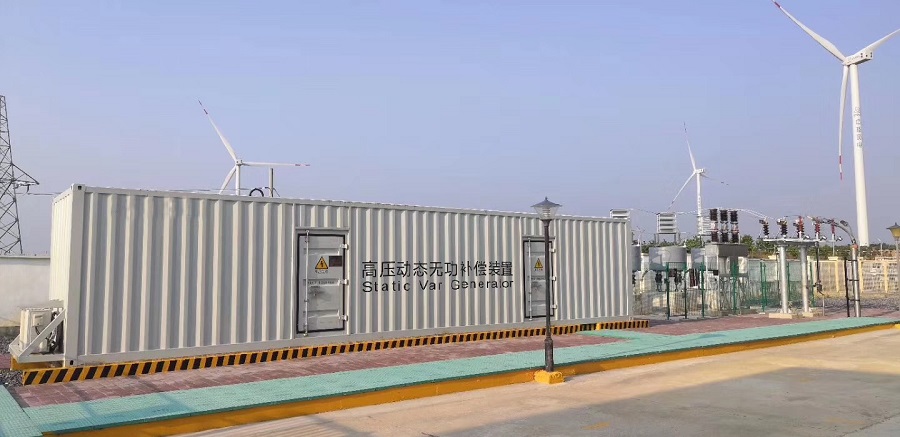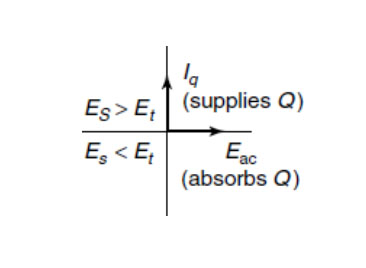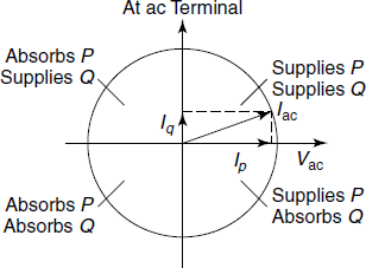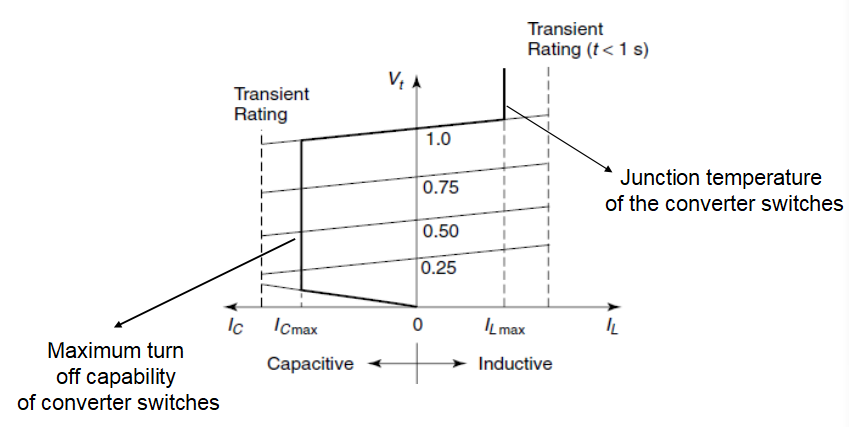STATCOM - Static Synchronous Compensator
It is a solid-state switching converter, capable of generating or absorbing independently controllable real and reactive power at its output terminals when it is fed from an energy source.

STATCOM is considered as voltage-source converter that, from a given input of dc voltage, produces a set of 3-phase ac-output voltages, each in phase with and coupled to the corresponding ac system voltage through a relatively small reactance.
STATCOM can improve
STATCOM structure
According to the application of the site, usually two types (outdoor and indoor) are installed
A STATCOM is similar to an ideal synchronous machine, which generates a balanced set of three sinusoidal voltages—at the fundamental frequency—with controllable amplitude and phase angle.
When supplying/absorbing Reactive Power
|
Reactive Power Generation |
Real Power Generation |
||
|
Magnitude Es>Et |
Generates reactive power |
Phase Es leads Et |
Generates real power |
|
Magnitude Es |
Absorbs reactive power |
Phase Es lags Et |
Absorbs real power |
If the amplitude of the output voltage is increased above that of the utility bus voltage, Et, then a current flows through the reactance from the converter to the ac system and the converter generates capacitive- reactive power for the ac system.
If the amplitude of the output voltage is decreased below the utility bus voltage, then the current flows from the ac system to the converter and the converter absorbs inductive-reactive power from the ac system.
If the output voltage equals the ac system voltage, the reactive-power exchange becomes zero, in which case the STATCOM is said to be in a floating state. Refer to figure 1.
 |
 |
| Figure 1 Reactive Power Generation | Figure 2 Real Power Generation |
In reactive power generation, the real power provided by the dc source as input to the converter must be zero. The primary need for the capacitor is to provide a circulating-current path as well as a voltage source.
In practice, the semiconductor switches of the converter are not lossless, so the energy stored in the dc capacitor is eventually used to meet the internal losses of the converter, and the dc capacitor voltage diminishes.
Hence by making the output voltages of the converter lag behind the ac-system voltages by a small angle (usually in the 0.1–0.2 degree range), the converter absorbs a small amount of real power from the ac system to meet its internal losses and keep the capacitor voltage at the desired level.
When supplying/absorbing Real Power
Adjusting the phase shift between the converter-output voltage and the ac system voltage can similarly control real-power exchange between the converter and the ac system.
If the converter-output voltage is made to lead the ac-system voltage, then the converter can supply real power to the ac system from its dc energy storage.
If its voltage lags behind the ac-system voltage, then the it absorb real power from the ac system for the dc system. Refer to Figure 2.
V-I Characteristic

Figure 5 V-I Characteristic of STATCOM
STATCOM can supply both the capacitive and the inductive compensation and is able to independently control its output current over the rated maximum capacitive or inductive range irrespective of the amount of ac-system voltage. That is, the STATCOM can provide full capacitive-reactive power at any system voltage—even as low as 0.15 pu.
The characteristic of a STATCOM reveals another strength of this technology:
The maximum attainable transient over-current in the capacitive region is determined by the maximum current turn-off capability of the converter switches. In the inductive region, the converter switches are naturally commutate.
scan to whatsapp:
